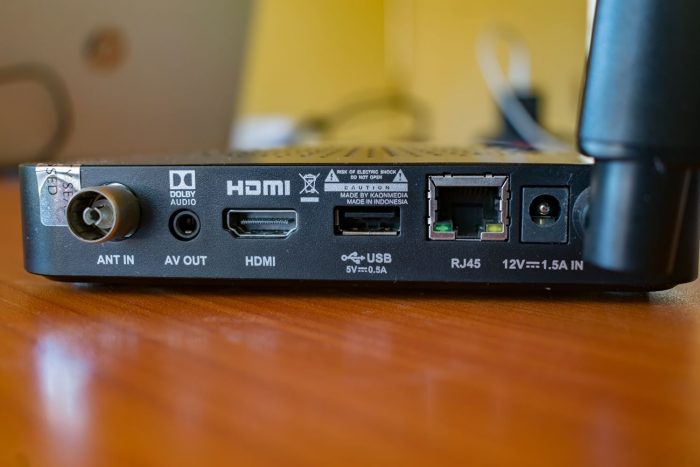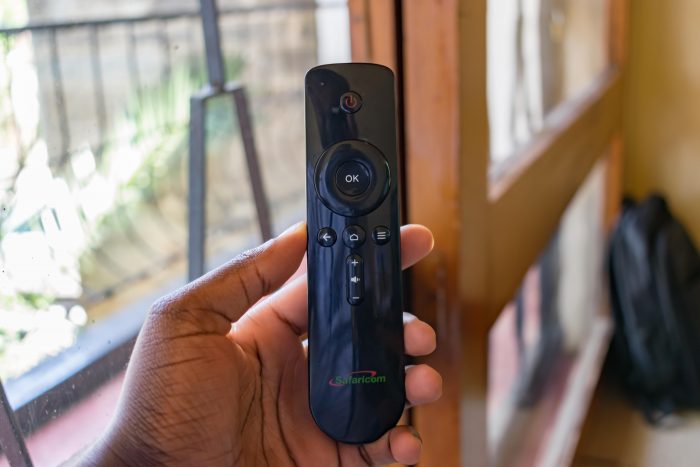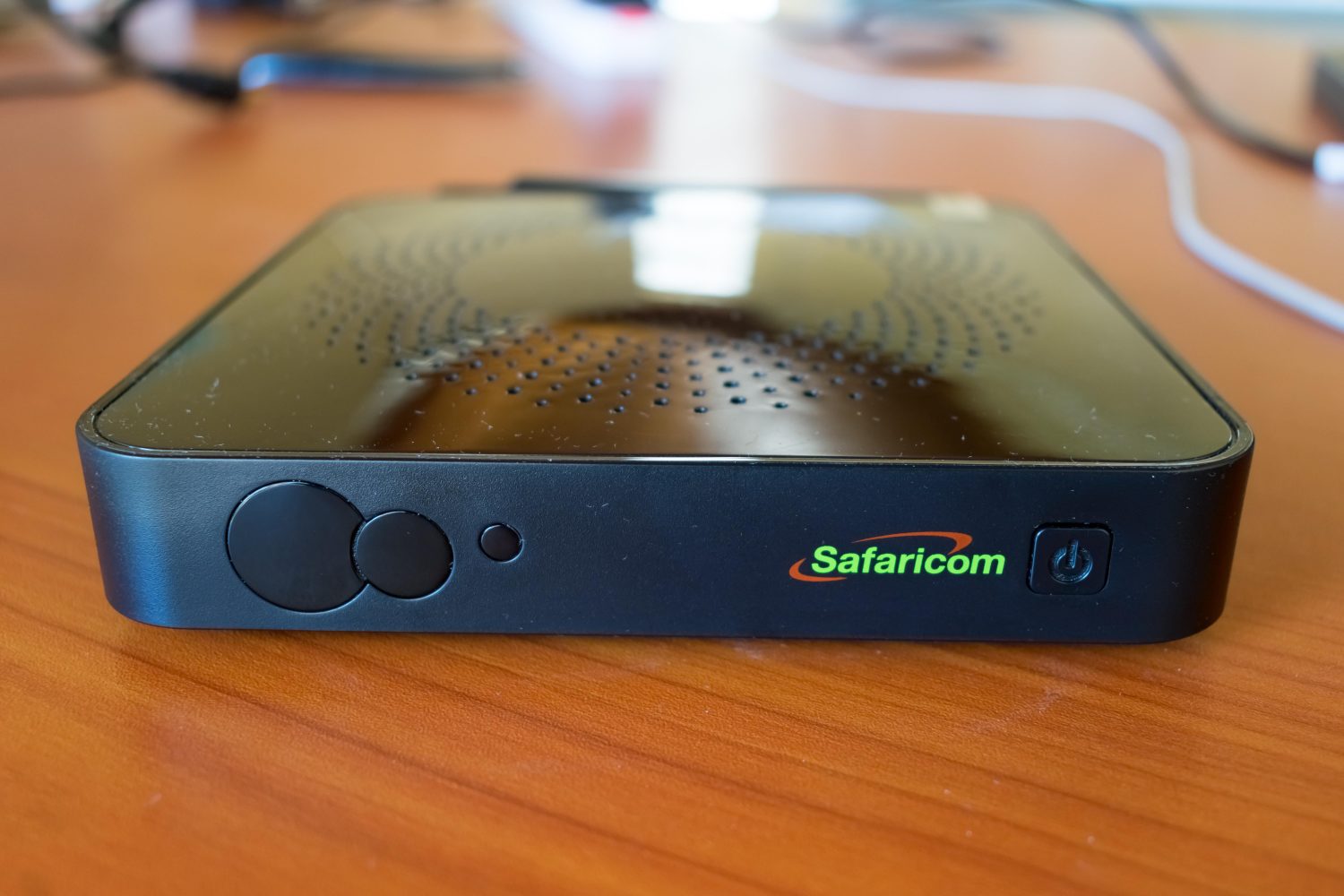
Safaricom, with its vast reach in the local market, has never shied away from dipping its feet in new businesses that would, directly or otherwise, appeal to its loyal customers. We have seen the telco launch a couple of hardware, including Neon Kicka smartphones that retail for as low as KES 3500 and TV STBs for some time now. The latter, which I have tested as a loaner from a friend, is the second generation of the original Big Box that was discontinued a couple of months after launch.
Dubbed the Big Box 2 or Safaricom Gigabox, the Android TV-powered device has been around for a year or less and owing to how the carrier has pushed it to the masses; it surely hopes to be the go-to solution for folks who have fully embraced streaming content over traditional systems that use terrestrial signals. This goal could be impactful in some way had the telco priced the Big Box 2 competitively, but that should hardly surprise anyone because it has become some kind of a tradition for Safaricom to charge a premium for even the humblest of its wares.
So, several months after launch, does the Big Box 2 make a name for itself, can it perform admirably and run content as advertised, or will it remain dead in your living room (pun intended)?
Okay, that is fine.
This short piece highlights my experiences, so read on and see if you can relate to them.
Setting the Big Box 2 up
To enjoy the services of the Big Box 2, you must set it up first. To begin with, it is imperative that you have Wi-Fi or SIM card with a substantial amount of Safaricom data. For Wi-Fi cases, the set-up process is straightforward: you hook the device to a power source, and link it to your TV, dumb or smart, with the included HDMI cable. Afterward, make sure you pick the correct HDMI input if your TV has a couple of such ports.
You should see the setup page afterward. After keying in your Wi-Fi credentials, the device will prompt you to enter your Google account details via a remote and an on-screen QWERTY keyboard. Authenticate, and that is it.
Hardware overview

If you peep into the box, you will only see a single printed circuit board that holds all the I/O ports and other essentials, such as the SIM card slot (yes, there is one) and the Wi-Fi card.

Also, the glossy black colour is okay for me, although I would have wanted to see other colours such as white that would complement the telco’s Huawei-manufactured FTTH routers. Nonetheless, I’m a fan.
There is a black and glossy remote in tow too (more of that in a minute) that is powered by two AAA cells.
On the whole, the Big Box 2 does not seem to put extra efforts to be beautiful or robust more than it is already. That is a good or bad thing depending on who you ask, but at its price, I think material choices could be better, and fit and finish could need more exceptional touches, and that is what I hope to see in the Big Box 3 should Safaricom decide to take that route. We will be here.
Software overview
This thing is powered by Android TV OS, which is the same OS that runs on our phones – but has been optimized for TV services. It is based on Android 7.0 Nougat (that is two generations older), and I have my doubts regarding its update cycle because, in its life, no one has reported receiving any updates.

That aside, the Big Box 2 ships with the following default apps: 1)TV (for access to local TV channels – but you will need an external antenna for that – but you may not need to because if you have the STB in the first place, chances are that you have a good internet connection for access to local TV content via YouTube live streams); 2) Showmax for movies and TV shows (the app generates a code that can be input on a Showmax sign-in page on a PC for it to link your account to the service); 3)DW for news and other informational broadcasts; 4) iflix (it has a couple of free-to-air channels even if you do not have a subscription) ; 5) TED for people who derive life satisfaction from motivational stories; 6) a video player app and lastly, 7) an SMS app for texting because texting on our TVs is what we do in 2018.
There is a handful of Google apps in tow as well; Google Play store, YouTube, Google Play Music and Google Play Games. The YouTube app, for instance, is not a blown-out mobile app but an optimized version for Android TV. Also, it is the single app I have been using for an extended period.
It is worth noting that Netflix and Prime Video are not supported at all, which can be a deal breaker for a lot of people. I can’t really tell if the inclusion of iflix and Showmax have anything to do with the omission, but your guess is as good as mine. Also, there are a couple of apps that are not supported, so depending on your entertainment flow, you may need to verify if your must-have Android TV apps can run on the STB before making a financial commitment.
Anyway, as I mentioned earlier, navigation is done via the small remote, which is also voice-supported if typing is not your thing. However, the speech recognition feature is mostly inaccurate and slow and have not used it for some time – but it is there should you need it.
The settings menu, which is at the bottom of the homepage alongside the power button and Wi-Fi indicator button, has normal controls. What appears to be new here is an upfront Google Cast setting (it is usually hidden under display settings on phone). Display settings include a screen resolution aspect, which can range from 1080p or 1080i at 60Hz to 480p at 60Hz (just keep it at max, although mine is at auto settings).
Remote Accessories is another option, which shows devices that have been linked to the STB via Bluetooth. At default, the remote can be seen there, and I also added a Bluetooth speaker just for test purposes (the speaker is linked to the TV in most cases).
You can also view the storage option of the device in the setting menu, which is 32 GB but can only access 24 GB and that is just enough for me.
If you have a Bluetooth-enabled gamepad, you can link it to the Big Box 2 and head over to Play Games and download titles that are optimized for Android TV (the section will guide you). I did not download any because 1) I don’t play games on phone and with people in real life (unless it is Candy Crush Soda) and 2) I do not have a gamepad in my humble abode.
Performance
Switching between apps is moderately fast.
Loading the same apps takes a couple of seconds, but not long enough to drive anybody mad.
Streaming (YouTube and Showmax), which is capped at 1080p (I could not get anything past that even if the device supports it because my internet plan cannot go past 2K streams), was mostly pleasurable and marked by very few hiccups.
Of course, the experience could be faster (I have seen fluid interfaces on expensive STBs), but I guess the Indonesia-manufactured Big Box 2 is limited to okay internal specifications.
The remote

It has 11 buttons that include a power key, volume, home, back, menu and a 4-way navigation button. They are tactile and clicky (although you need to push them a little bit harder). Below the buttons is a Safaricom logo, and at the back is a slot for two AAA batteries that I realized get depleted faster than those fitted in traditional remote-control devices.
Text input
A QWERTY keyboard is only available in a set of fields, but missing in others. In YouTube, for instance, the keyboard reverts to ABCD all the way to Z, which is, quite frankly, frustrating.
Fortunately, it responds fast, and even includes a Clear All for deleting long inputs.
SIM Card users

Final Thoughts
The Big Box 2 is a device I can live with because most of the apps it does not support do not feature anywhere in my favourite list. It is also speedy enough for my tastes, has sufficient media and app-hoarding room should I ever need it, is an average looker and has a pretty little remote that supports Bluetooth. I am a big fan.
Contrastingly, the Big Box 2 is wildly expensive. Safaricom asks for KES 9,999 for it, which is just too high even for wealthy folks. What is more, better products cost much less than that, which makes me question Safaricom’s intention here. At one time, it heavily discounted the box to KES 5,999, which according to me, is a sweet spot for interested buyers.
The device could use a couple of hardware improvements in the coming days. It has too much plastic (we associate plastic with poor quality). Improvements should also consider the SoC because I suspect the Big Box 2 will not age well in terms of performance. Also, how about support for Netflix and Prime video for the third iteration?





























